Hangul 장조 Hangul 사도 세자 McCune–Reischauer Changjo Children Jeongjo of Joseon | Revised Romanization Jangjo Name Crown Sado Hanja 莊祖 Hanja 思悼 世子 | |
 | ||
Died July 12, 1762, Changgyeonggung, Seoul, South Korea Similar People Yeongjo of Joseon, Jeongjo of Joseon, Lady Hyegyeong, Sunjo of Joseon, Sukjong of Joseon | ||
The Throne (2015)
Crown Prince Sado (13 February 1735 – 12 July 1762) was born Prince Jangheon, the second son of the Korean King Yeongjo (1694 – 1776). Due to the prior death of his older brother Prince Hyojang (1728), the new prince was the probable royal heir. However Prince Sado was not given an opportunity to reign. At the age of 27, he was executed by order of his father, and died of starvation by being confined in a rice chest. His father gave him the posthumous title Sado, meaning "Thinking of with great sorrow."
Contents
- The Throne 2015
- 17 Ruins of Gyeongmogung Palace to enshrine the Crown Prince Sado
- Life
- Illness
- Execution
- Conspiracy theory
- Burial
- Taboo and Reinstatement
- Family
- His full posthumous name
- His imperial posthumous name
- In popular culture
- References
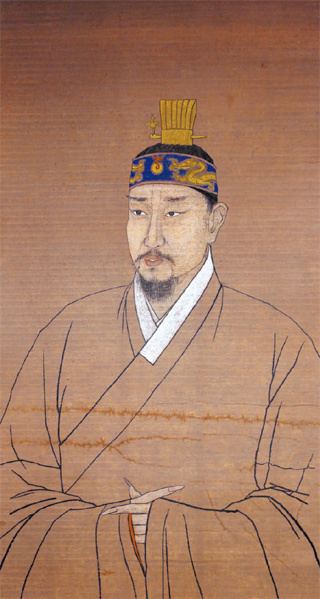
서울 표지석 이야기 - 17. Ruins of Gyeongmogung Palace to enshrine the Crown Prince Sado
Life
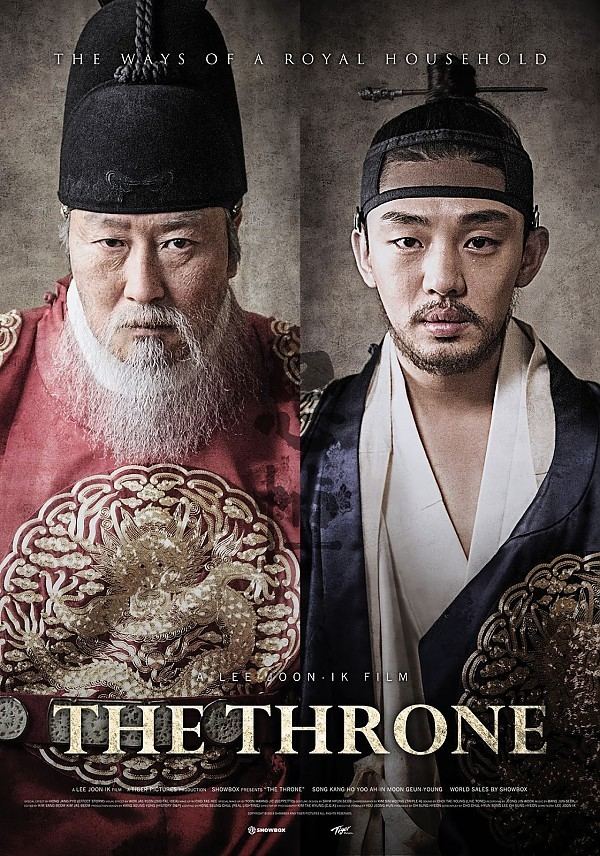
Sado's wife wrote a memoir in 1805 detailing their life together. She records that the prince suffered a severe illness during 1745, where he often lost consciousness. Although he recovered, the tense relationship between Sado and King Yeongjo led to him experiencing severe anxiety whenever in his father's presence. When Sado came of age at 15, his father appointed him regent, giving him the power to make decisions on administrative matters. Lady Hyegyeong describes King Yeongjo as perpetually dissatisfied with whichever course of action Sado chose. Yeongjo also did not permit Sado to visit the ancestral tombs until as late as 1756, nor was he allowed to attend auspicious court events. Yeongjo also always made sure to chastise his son in front of a large crowd, either of ladies-in-waiting or eunuchs. As a result, Sado formed a strong bond with his sister Princess Hwahyeop, who was similarly disfavoured by their father. When she died in 1752, Sado was reported to have grieved intensely.
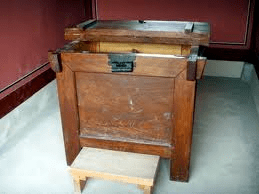
In 1752, Sado read a Taoist text called Okchugyeong (Hangul: 옥추경; Hanja: 玉樞經). Whilst reading, he hallucinated that he saw the Thunder God. Henceforth, Sado was terrified of thunder and refused to touch any object engraved with the characters of the book.

Sado took a secondary consort, Yeongbin (Royal Noble Consort Suk), with whom he had a son in 1754. Terrified of his father's anger, Sado forced her to take abortive medicines, but the child was born safely anyway. Arrangements for Yeongbin's delivery and housing were made by Lady Hyegyeong. Sado had another son with Yeongbin in 1755, from whom the first emperor of Korea was descended.
Illness
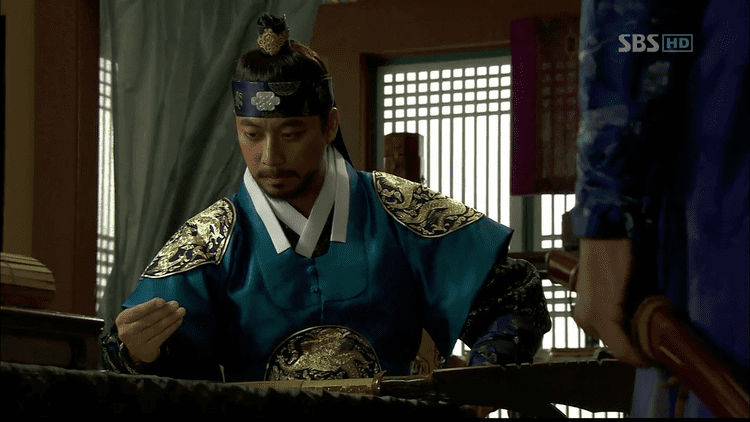
In 1757, Yeongjo's legal mother and wife died within a month of each other. Sado had been close to both of them and their deaths led to a marked deterioration in his mental health and relationship with his father. As a way of dealing with his frustration and rage, Sado beat his eunuchs. In the same month as the burial of Queen Jeongseong, Sado walked into his chambers holding the severed head of a eunuch whom he had killed, forcing the ladies-in-waiting and his wife to view it. After this, he frequently killed palace staff to release his emotions, as well as assaulting and raping many ladies-in-waiting. Lady Hyegyeong reported Sado's issues to Royal Noble Consort Yeong, but begged her not to speak to anyone of the matter, as she feared for her own safety if Sado discovered she had told someone. By 1758, a previous phobia of Sado's regarding clothing became intensively problematic.
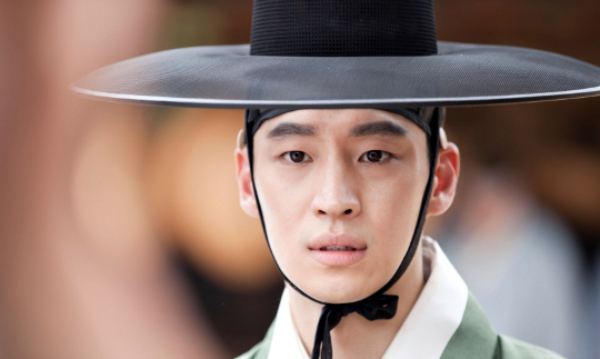
Late in 1757, Sado took in another secondary consort, Pingae (Royal Noble Consort Gyeong), who had been a lady-in-waiting to his grandmother, so his relations with her were considered to breach the incest taboo. When Yeongjo found out, he berated his son and Sado eventually jumped down a well, but a guard pulled him out. Lady Hyegyeong had, by this point, managed to have Pingae hidden in the home of Sado's sister, Princess Hwawan.
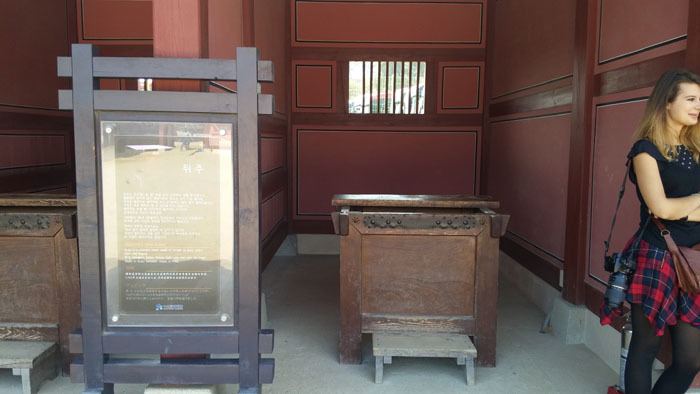
On his birthday in 1760, Sado suffered a burst of outrage at his parents, berating Royal Consort Yeong, as well his own son, and two daughters. After this, Sado threatened Princess Hwawan, demanding that she use her influence over King Yeongjo to move palaces and allow Sado to visit the springs at Onyang. He also threatened to kill her; an event witness by Lady Hyegyeong and Sado's mother. Sado was physically violent toward his wife, which necessitated Lady Hyegyeong to avoid court events to hide the bruises.
In 1761, Sado beat Pingae in a fit of rage. He left her on the floor, where she died. Lady Hyegyeong prepared her body for the funeral rites, but, on his return, Sado reportedly said nothing about Pingae's death.
Execution
In summer 1762, an altercation with an official at court enraged Sado. As revenge, he threatened to kill the official's son and attempted to sneak through a water passage to the upper palace. He failed to find the son and, instead, confiscated clothing and items belonging to him. Rumours that Sado had attempted to enter the upper palace to kill King Yeongjo spread around the court. Fearing for the safety of her grandchildren, Royal Consort Yeong begged Yeongjo to deal with Sado. By court rules, the body of a royal could not be defiled and, under the then-common practice of communal punishment, Sado's wife and son (the family's only direct male heir) could also face death or banishment if he were executed as a criminal. As a solution, Yeongjo ordered Sado to climb into a wooden rice chest (roughly 4x4x4ft) on a hot July day in 1762. According to Lady Hyegyeong's memoirs, Sado begged for his life before getting into the chest, though he attempted to get out again.
Along with her children, Lady Hyegyeong was taken back to her father's House on the same day. After two days, King Yeongjo had the chest containing Sado tied with rope, covered with grass, and moved to the upper palace. Sado responded from inside the chest until the night of the seventh day; the chest was opened and he was pronounced dead on the eighth day. Yeongjo then restored him to the position of crown prince.
Conspiracy theory
During the 19th century, there were rumors that Prince Sado had not been mentally ill, but had been framed; however, these rumors are contradicted by his wife, Lady Hyegyeong, in The Memoirs of Lady Hyegyeong. Sado's death remains an issue of debate as to whether his death was a retribution for his actual misconduct or if he was the victim of a conspiracy by his political opponents.
Burial
Crown Prince Sado was buried on Mt BaebongSan in Yangju. His body was moved by his son, King Jeongjo, to its current location in 1789, then called Hyeollyungwon near Suwon, 30 kilometers south of Seoul. Five years later the Suwon Hwaseong Fortress was built by King Jeongjo, specifically to memorialize and honor his father's tomb (the construction lasted 1794-1796, while the official reception was 1795). Lady Hyegyeong died and was buried with her husband in 1816.
Prince Sado and Lady Hyegyeong were posthumously elevated in status and given the titles Emperor Yangjo and Empress Heonyeong in 1899. Their tomb and that adjacent tomb of their son, King Jeongjo, and Queen Hyoui were upgraded accordingly and renamed Yungneung.
Taboo and Reinstatement
Prince Sado was reinstated fifteen days after he died. To even say the name of Sado was banned by King Yeongjo during the period of his reign. Because of this decision, Prince Sado's son, Jeongjo, who ascended The Throne following the passing of the King Yeongjo, was added to his deceased uncle's (Prince Hyojang's) family register. One of Jeongjo's first statements upon becoming king, however, was to declare, "I am the son of Prince Sado." Jeongjo always showed great filial devotion to his father, Prince Sado, and reinstated his original name and title, Prince Jangheon.
Family
- Princess Consort Hyegyeong of the Pungsan Hong clan (6 August 1735 - 13 January 1816) (혜경궁 홍씨)
- Yi Jeong, Crown Prince Uiso (27 September 1750 - 17 April 1752) (이정 의소세자)
- Prince Successor Yi San (28 October 1752 – 18 August 1800) (왕세손 이산)
- Princess Cheongyeon (1754 - 9 June 1821) (청연공주)
- Princess Cheongseon (1756 - 20 July 1802) (청선공주)
- Royal Noble Consort Suk of the Buan Im clan (? - 1773) (숙빈 임씨)
- Yi In, Prince Euneon (29 May 1754 - 30 June 1801) (이인 은언군)
- Yi Jin, Prince Eunshin (11 January 1755 - 29 March 1771) (이진 은신군)
- Royal Noble Consort Gyeong of the Park clan (? - January 1761) (경빈 박씨)
- Yi Chan, Prince Eunjeon (14 August 1759 - 26 August 1778) (이찬 은전군)
- Princess Cheonggeun (1758 – 1 September 1835) (청근옹주)
